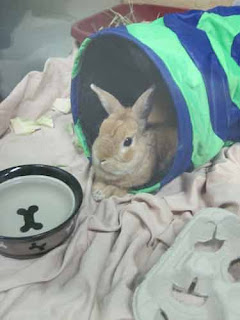Location: Toronto, Ontario, Canada
Address: 11 River Street
Date: May 2019
Website: www.torontohumanesociety.com
The Toronto Humane Society always has its doors open for stray animals. During Doors Open Toronto it welcomed people to tour behind the scenes. The Humane Society is always a place of great sadness when a lost or injured animal is brought into the shelter. It can also be a place of great joy when these animals find a new home.
The Humane Society building is hard to miss thanks to a bright mural by artist Uber 5000. The mural fills the entire wall of the building which is located where King Street East meets Queen Street East. As always in any Uber 5000 artwork there are little yellow birds hiding in the background.
As we entered the building we noticed a dedication to thank Canadian pianist Glenn Gould for his contributions. Glenn was alway known for his love of animals as well as his piano playing.
The first animals we visited were the dogs. As our group gathered, a volunteer brought out a small black dog and worked his way through the crowd. Behind him followed an older man who said "He's going to be my dog". A huge smile stretched across his face. This was not the only dog to be successfully adopted. As the dogs yipped and barked for our attention we could see from the signage that most would be on their way to new homes soon.
After the dogs we visited the special species section. A bunny door stop held the door open for us.
Just inside the doors was Carmel the bunny. Carmel was doing her best to look cute and adoptable. Getting a pet on impulse is a bad idea without understading the long term cost and comittment.
There were lots of information packages on caring for different animals. We know a family who recently took in an African pygmy hedgehog so we picked up a booklet for them.
At the exit was a bearded dragon who was wearing a cone so he didn't touch or scratch where he shouldn't. A note next to him stated that he was headed to a sanctuary.
A lot of feral or street animals come into the shelter. The only way to stop more and more of them from coming is to have them spayed or neutered. This way they can no longer reproduce.
A sign in the operating area shows how they clip the ears of spayed or neutered cats so they can easily be recognized. This prevents cats being rounded up for repeat surgery that they don't need.
The shelter is also home to many cats. Cats like yarn and thread which can be a problem.
We were shown some animal x-rays that showed broken bones and some that showed needles stuck inside a cat. Cats love the thread but dont realize a needle is tied to the end. Any metal in an x-ray shows up bright white like bones do.
The Toronto Humane Society does a good job looking out for animals in our city. They also do a good job for people who get the gift of a pet in their life.
Map of Our World
 Toronto Humane Society
Toronto Humane Society Post # 252






























